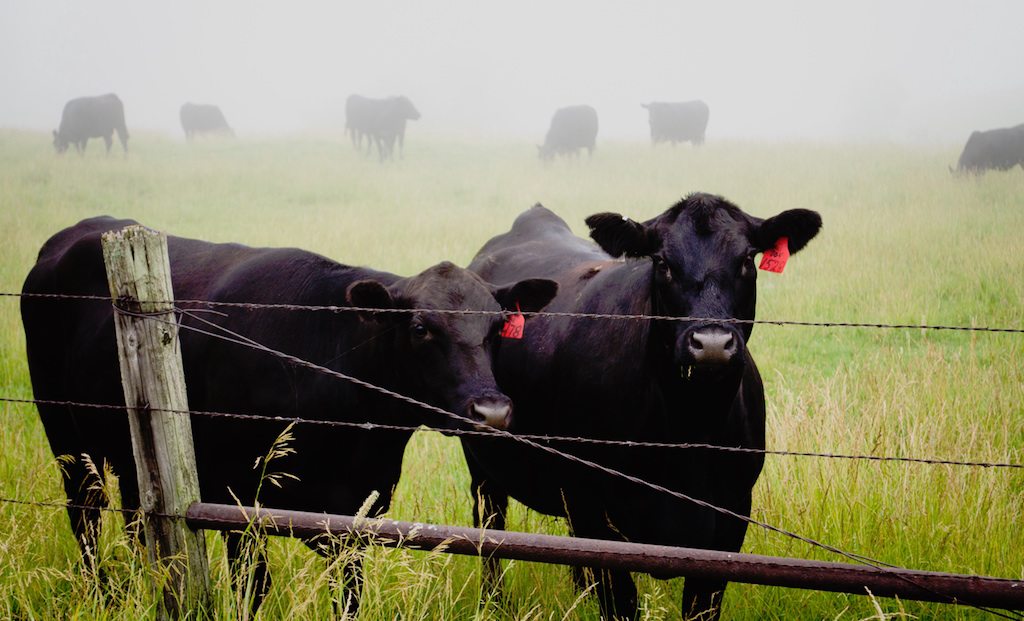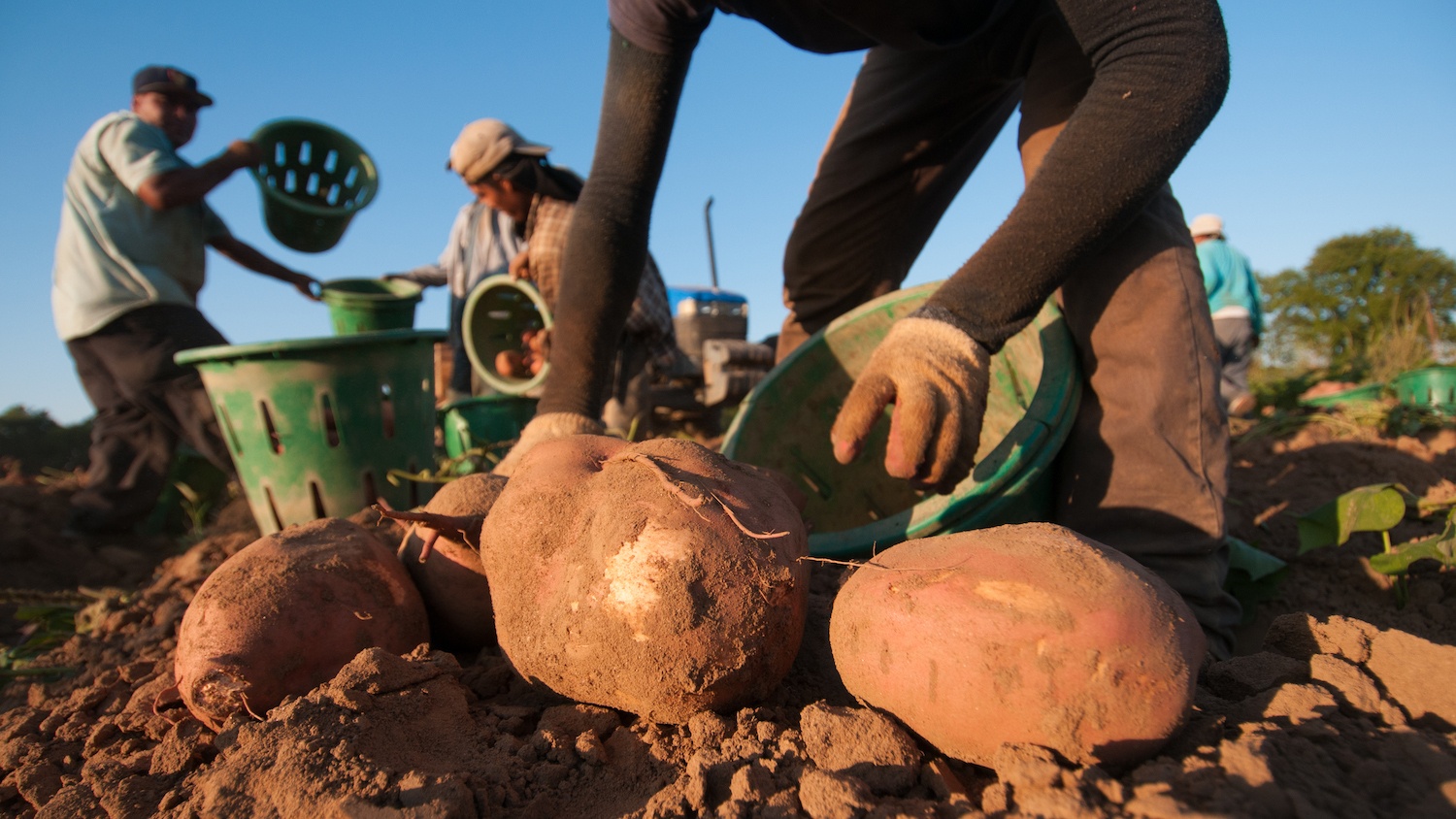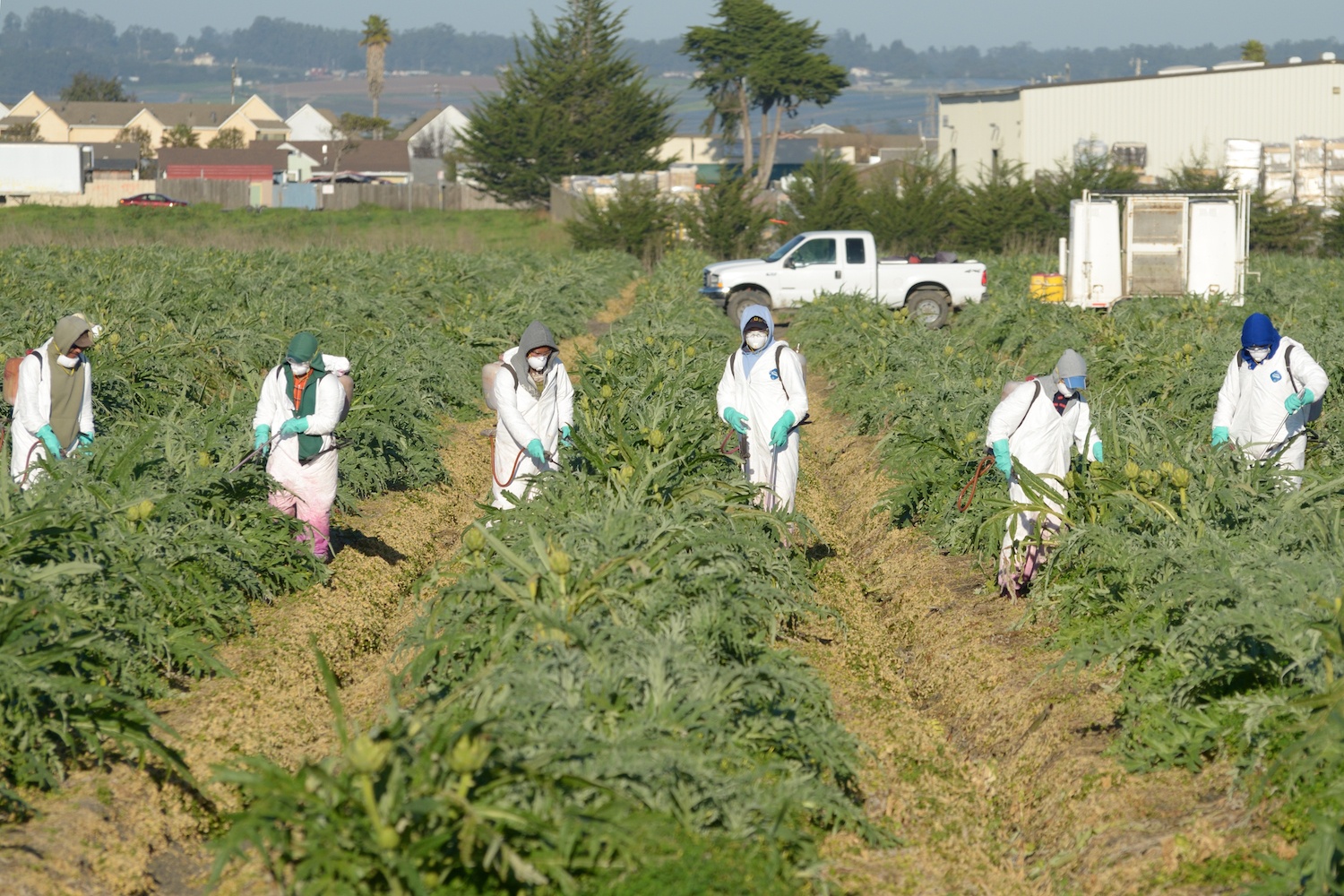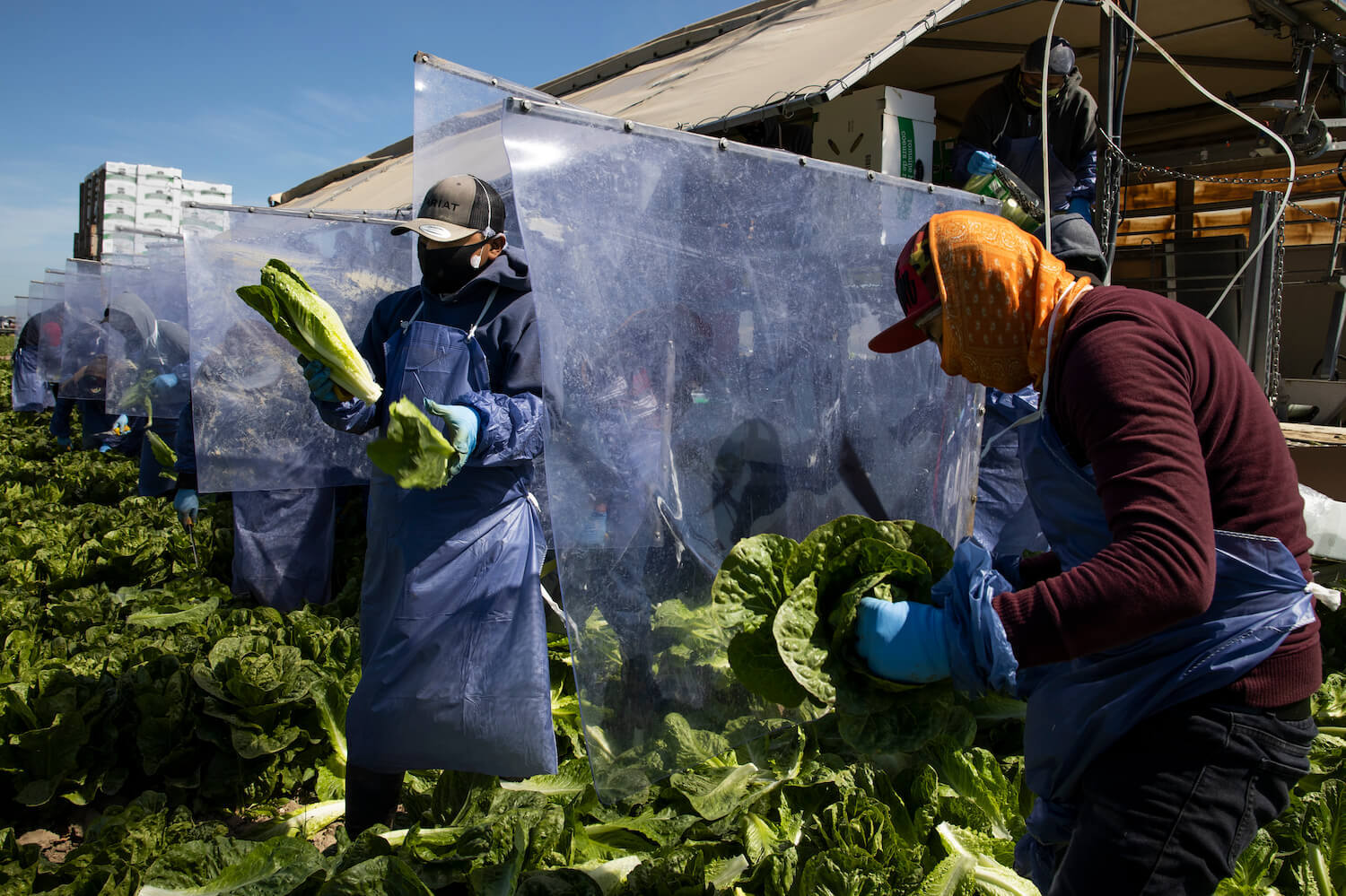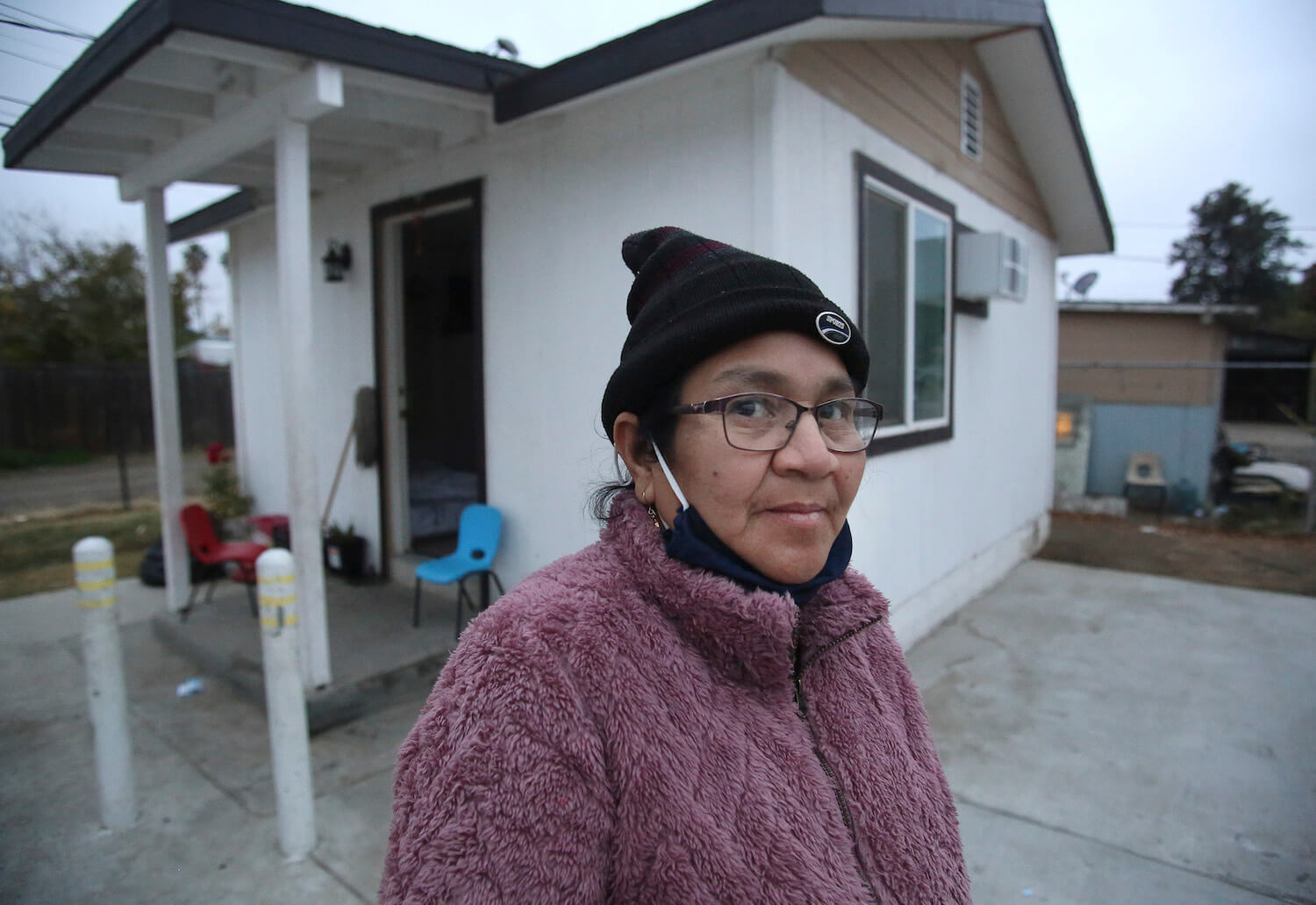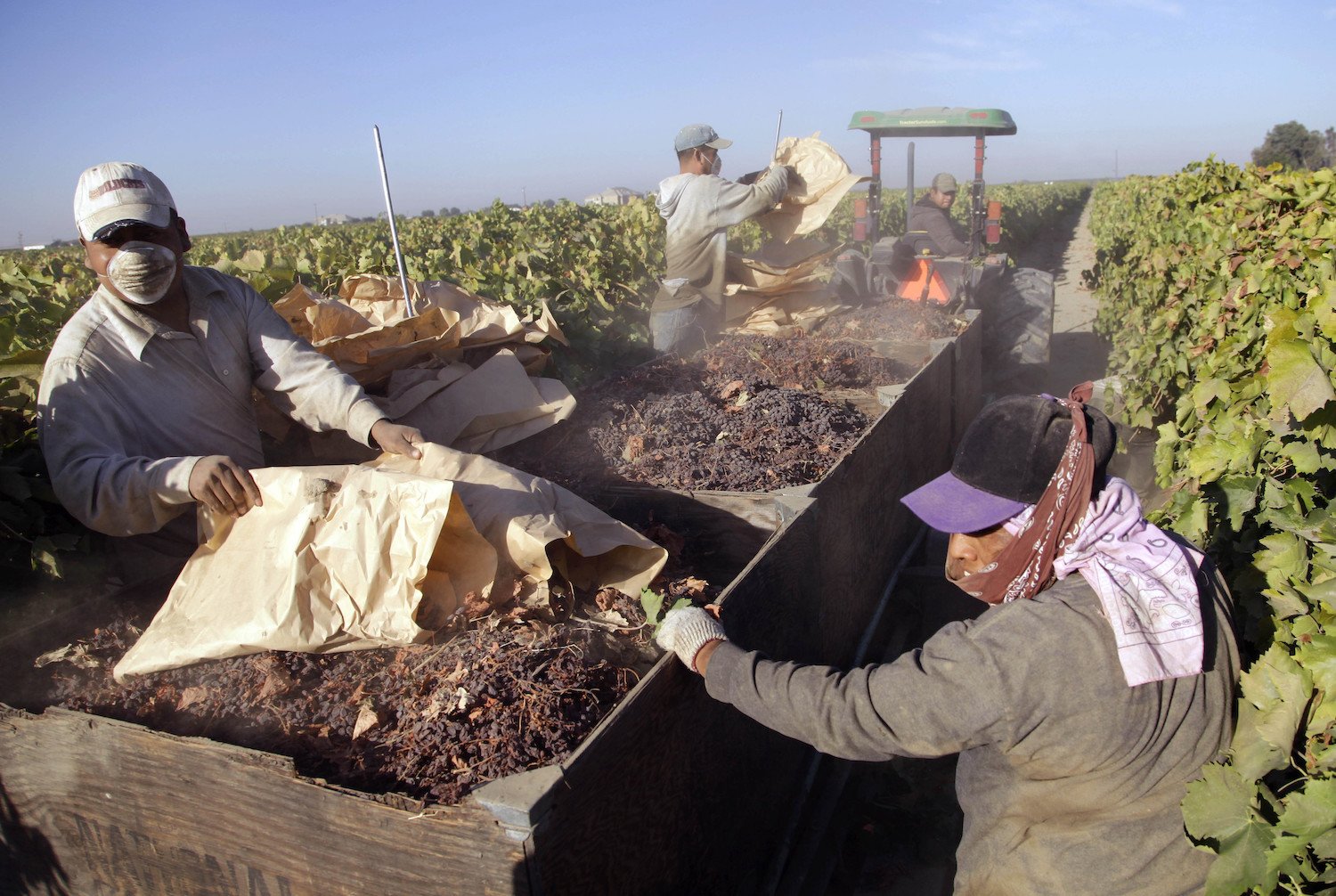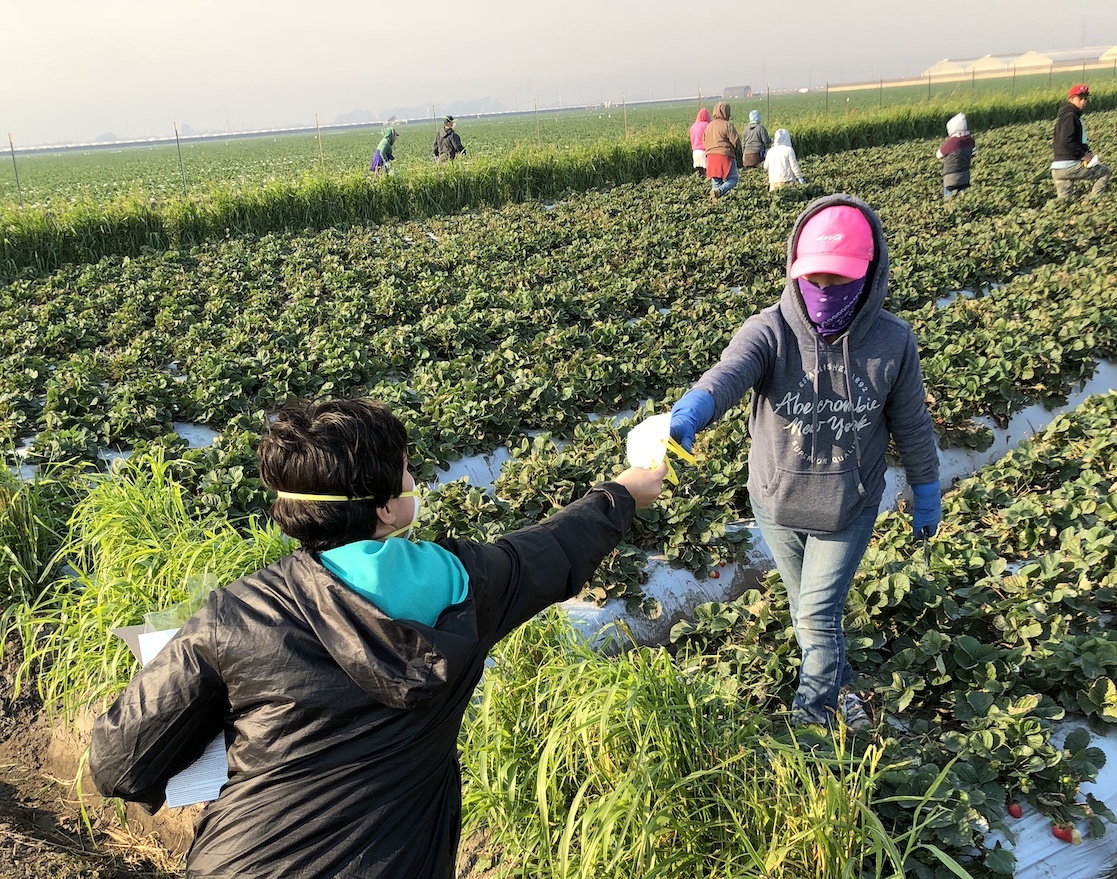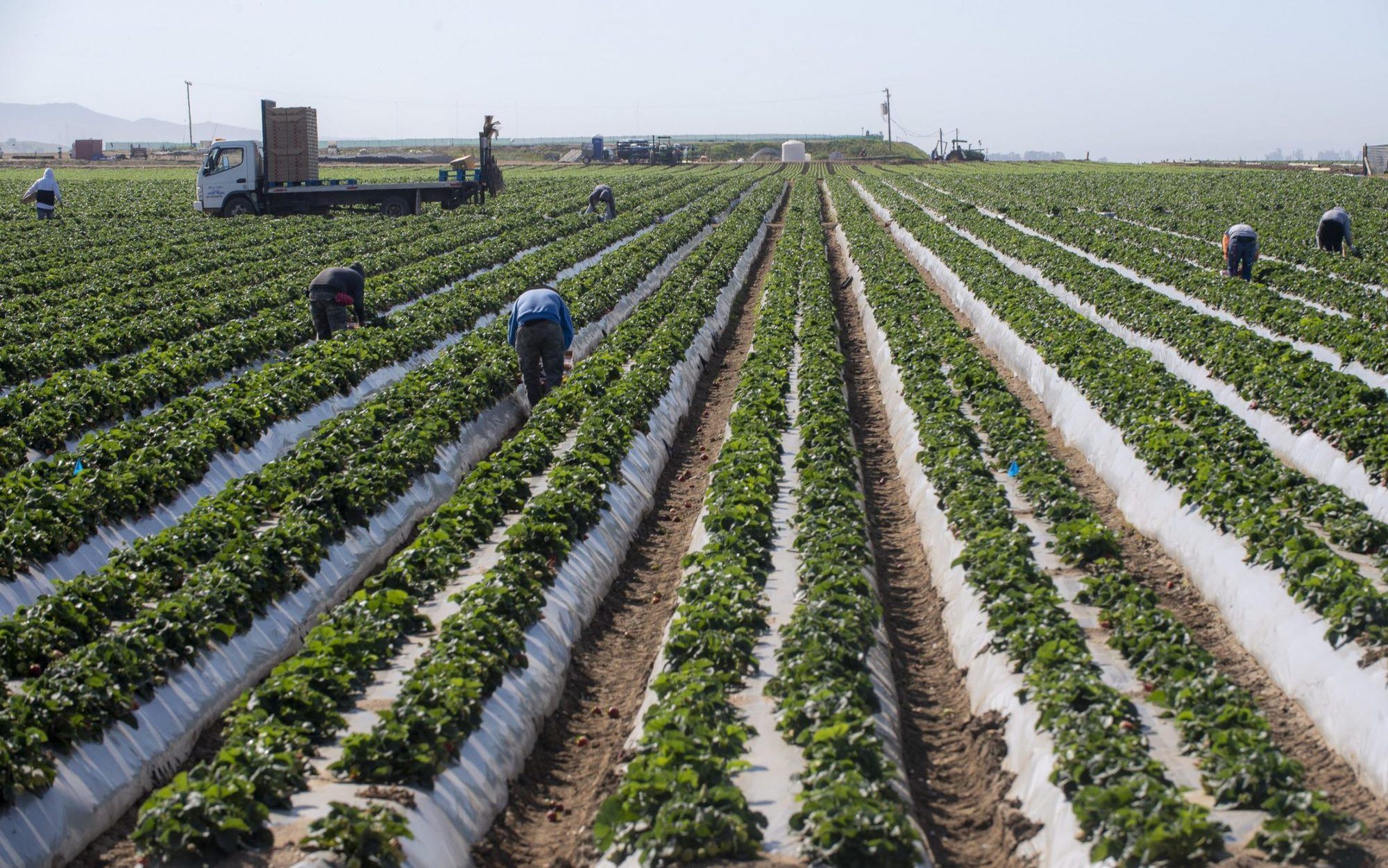
Photo by David Rodriguez, The Salinas Californian
The court’s recent decision to restrict union organizers from farms could have an unintended consequence: an increase in labor trafficking.
In June of 2018, two Monterey County site inspectors visited a Salinas cannabis farm, where they encountered a small group of farmworkers who they suspected had been trafficked.
This story originally appeared in CalMatters, an independent public interest journalism venture covering California state politics and government.
Pictured above: Fieldworkers are photographed picking strawberries on Saturday, April 25, 2020.
The farmworkers, who spoke no English, took off running when Monterey County Resource Management Agency officials approached them. They couldn’t go far, though — the cultivation site was fenced in. The farmworkers seemed terrified, the county’s prosecuting attorney later said.
Their behavior was unusual enough that inspectors called the Monterey County Sheriff’s Office, who sent deputies to investigate.
It soon became clear the dozen or so Hmong farmworkers, employed by labor contractor Levi Trimmigration, were living in substandard housing: metal shipping containers furnished only with camping equipment. They had no running water, no ventilation and slept on camping cots.
According to the National Human Trafficking Hotline, California is one of the most prominent sites of human trafficking in the U.S. In 2018, of the nearly 11,000 cases reported nationally, more than 1,600 came from California. About 150 of those cases were reports of labor trafficking.
“A lot of these workers are living in labor camps owned by the employer, are transported to and from their worksites, and these folks are isolated.”
A recent U.S. Supreme Court decision on private property rights has human trafficking experts, including former law enforcement officers, advocates, and attorneys, worried that trafficked laborers will now be left without anyone looking out for them. These advocates say union organizers are among the first to recognize signs of labor trafficking.
In the Cedar Point Nursery v Hassid decision, announced in late June, the Supreme Court decided to uphold private property rights over organizing rights, prohibiting California union organizers from fields and bunkhouses.
The conservative majority held that the access regulations allowed “physical invasion” of the land without compensation.
Increasingly, many farmworkers are indigenous Mexicans. In many cases, they do not speak, read, or write English or Spanish, and may be unaware of their rights while working in the U.S. That makes them vulnerable to labor abuses or trafficking.
“A lot of these workers are living in labor camps owned by the employer, are transported to and from their worksites, and these folks are isolated,” said Elizabeth Strater, United Farm Workers Director of Strategic Campaigns. “They never leave their employers’ property. In some instances, they are isolated by design.”
What is labor trafficking?
Labor trafficking is a form of human trafficking. It involves forcing or coercing someone to provide labor or services, such as picking produce in the fields or washing dishes in a restaurant.
California’s Department of Justice estimates that up to 17,500 trafficking victims are brought into the country annually. Men, women, entire families, and children as young as 5 years old have been found to be victims of labor trafficking in agriculture, working as migrant or seasonal farmworkers harvesting and packing crops or raising animals, according to the National Human Trafficking Hotline.
Given its enormous agricultural sector, Monterey County Deputy District Attorney Greg Peterson said the county is likely a leading county for labor trafficking. However, experts say it is significantly underreported and under-enforced in comparison to sex trafficking.
“Your assumption is if they’re out there doing that in plain sight that it must be okay. You aren’t even thinking that these people are underpaid, not being paid at all, or are being kept in living conditions that no one would live in.”
“I believe that labor trafficking is hiding in plain sight,” said Stephany Powell, director of law enforcement training and survivor services for the National Center on Sexual Exploitation. “How many times do we drive past agricultural places and see people picking cherries or vegetables? Your assumption is if they’re out there doing that in plain sight that it must be okay. You aren’t even thinking that these people are underpaid, not being paid at all, or are being kept in living conditions that no one would live in.”
“We’re seeing it, but we don’t know what we’re seeing.”
Derek Marsh, assistant director of Vanguard University’s Global Center for Women and Justice, has done anti-trafficking work since the early 2000s, when he worked as a deputy chief in Orange County’s Westminster police department.
“Unfortunately, labor trafficking on the whole is not well recognized or prosecuted,” Marsh said. “Because sex trafficking is so egregious, both federal and local officials focus on that, to the exclusion of labor trafficking.”
Sowing seeds of fear
Labor trafficking is notoriously difficult to spot and can take many forms. Migrant farmworkers — like the Hmong workers found living in shipping containers alongside the Salinas cannabis field — are ripe for labor abuses.
In some cases, captors confiscate workers’ passports, visas or drivers’ licenses, and tell victims they have to work to earn them back. In others, they might force victims to live or work in unsafe or unsanitary conditions or promise a rate of pay they never deliver on.
Captors sow fear in the minds of workers to control them, Marsh said. They may tell farmworkers that if they speak with the authorities about their circumstances, they will be deported, or they’ll never see their families again.
“If a human trafficker is doing their job, they’ve convinced these people they can’t go to the authorities, they’ll lose their status, they’ll go to jail,” said Peterson, who prosecuted the Levi Trimmigration case. “They’ve worked to convince them they’re not safe and they need the traffickers to help them.”
“The only information they get is from the people that have them in captivity…so having the labor unions giving them information, there’s another watchful eye.”
At least 80% of labor trafficking victims have come to the U.S. legally, and it’s only through victimization that they lose their status as workers, Marsh said.
People who have experienced labor trafficking can suffer complex Post Traumatic Stress Disorder after a series of traumatic experiences like the day-in and day-out of being trafficked. Meanwhile, companies that traffic people often enjoy significant profits off their labor. Marsh added that forced labor, which often comes with long hours and unsanitary conditions, could translate into food safety issues for consumers.
“If you have a slave force, you don’t have to pay what the market demands,” Marsh said. “As a business person, you are not going to be competitive with competitors doing that, because their costs are lower.”
“In my mind, the more eyes, the merrier. It makes sure operations are transparent and they have informed employees.”
Language barriers, employer-provided housing, employment-dependent visas and work located in remote fields create significant barriers for farmworkers who feel they are being exploited, said Powell, with the National Center on Sexual Exploitation.
“The only information they get is from the people that have them in captivity…so having the labor unions giving them information, there’s another watchful eye,” she said. “Now, they’re not invisible.”
While Marsh said he had not heard of many incidences of union organizers identifying labor trafficking, it is important that farmworkers have regular contact with people — such as organizers — who could identify signs of trafficking.
“In my mind, the more eyes, the merrier,” he said. “It makes sure operations are transparent and they have informed employees.”
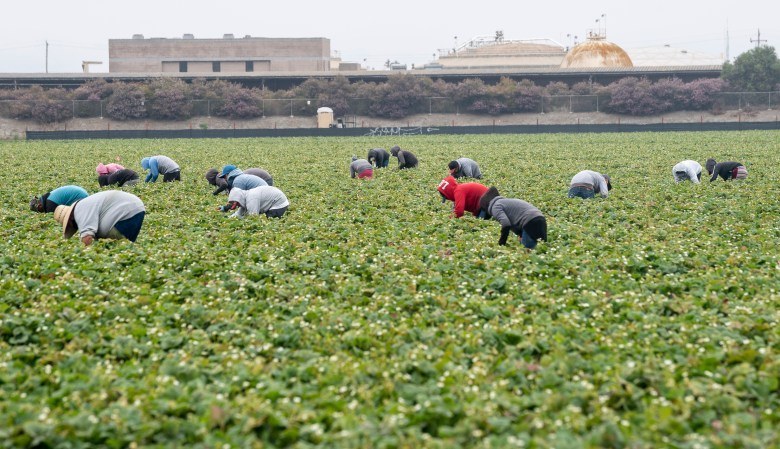
Farmworkers pick strawberries in Watsonville, Calif., on Wednesday, July 29, 2020. Photo by David Rodriguez, The Salinas Californian.
Photo by David Rodriguez, The Salinas Californian
Beyond a reasonable doubt
Experts agree that labor trafficking is notoriously difficult to prosecute.
In many cases, traumatized victims are reluctant to speak with police, and when they do, their stories don’t always match up. Additionally, people from outside the U.S. who have been trafficked often want to go home rather than participate in a years-long lawsuit.
Many counties have followed Santa Clara and Alameda counties’ leads by focusing on charging for workers’ compensation violations and fraud, Peterson said.
“That is the easiest way to go after people we suspect of human trafficking but don’t have the evidence to go after them,” he said. “If they’re keeping them captive, they’re probably not compensating them properly and are doing anything (they can) under the table.”
Although officials suspected Levi Trimmigration owners Eesai and Chang Lee Levi of trafficking the Hmong workers, they were charged only with withholding pay from workers, Peterson said.
“I didn’t think we could prove it beyond a reasonable doubt,” he said. “It really showed me just how challenging these cases can be.”
This article is part of the California Divide, a collaboration among newsrooms examining income inequality and economic survival in California.
This article was originally published by CalMatters.

